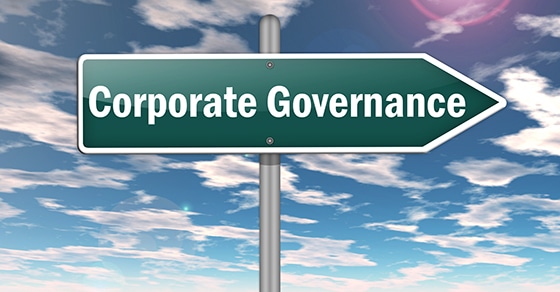When the Great Recession hit in 2008, Millennials in particular witnessed first-hand the turmoil it wreaked on the economy and the finances of their parents and grandparents. The market fallout wiped huge chunks of value from millions of people’s retirement savings accounts and caused ripple effects that are still being felt today. From this chaos, a new movement gained ground: FIRE.
FIRE, or “Financial Independence, Retire Early,” arose from the notion that by taking extreme measures to live frugally, any individual has the power to save enough to retire decades early. The Congressional Budget office is (CBO) already projecting a Social Security shortfall in the order of billions of dollars. Millions of baby boomers are also reaching retirement age. It’s unsurprising that a significant portion of Millennials don’t want to take the chance that Congress and future Administrations will make significant funding improvements by the time they reach traditional retirement age many decades from now. They want to take it into their own hands.
What exactly is the FIRE Movement?
The FIRE Movement proclaims that you can gain financial independence from federal programs available to the public beyond age 70. A wealth of literature, podcasts, and online communities all outline a set of shared principles to live by in order to achieve this. The Movement suggests that you can distill your livelihood a step further and draw from your 401(k) accounts beyond age 59.5 without tax penalties. While you’re at it, why not gain complete control over how you spend your weekdays and ditch your employer in your 30s or 40s if you choose? Does this sound far fetched to you? Well, it doesn’t for everyone.
A central tenant of FIRE is the 4% rule. It states that you need to save enough money to be able to draw down 4% of your portfolio balance each year for 25 to 30 years of your retirement. The younger you are, the longer your wealth will need to last. If you budget to live comfortably off $100,000 per year, then you need to have $2.5 million saved before you quit your job. Some experts also recommend that you track the cost of inflation and make incremental increases to your annual budget.
To achieve this, it means sticking strictly to your set of rules for saving and lowering expenses. The two biggest expenses that we have are transportation and housing. Hold on to your aging car to avoid taking on new car payments. The next time you need to lease an apartment, get a roommate. If you own a house, think about renting your spare bedrooms to lower your outgoing living expense so that you can pay down your mortgage more quickly. Start couponing, and even delay purchases until you can pay for large ticket items in cash.
FIRE is also turning some old financial advice on its head. The 1990s and 2000s neighborhood personal finance gurus told us to cut up all our credit cards, for example. Sure, everyone wants to avoid the interest expense (and potential for mismanagement) of credit cards. FIRE, however, instead suggests using credit card airline miles, points, and sign up bonuses to help gain more financial independence: pass your daily household expense and bill payments through your credit cards to earn points, and then pay down the balances each month with cash. Just stay on top of billing cycles to help lessen the swings caused by the higher credit card utilization. You can simply leave your points untouched until you need them.
It sounds good in theory, but does FIRE really work?
Making real progress with FIRE means you need to have a high proportion of disposable income. While being a high-income earner will certainly help, larger paychecks do not necessarily mean that the earner will spend less and save more. The FIRE movement involves disciplining yourself to actively track each expense. As you meet a new milestone, you mark it on a spreadsheet and then continue towards the next goal.
You can also look to other methods to help you save. While we can only work a limited number of hours in a week, creating a passive income stream can help bolster your finances. To achieve this, you can try to create a business model which offers a self-sustaining service with controlled expenses and low recurring maintenance costs. Some people generate passive income through digital ads and online marketing. If you are a good vlogger or have a hobby website with a strong following, you could potentially monetize it by partnering with WordPress, YouTube, or Instagram by running their ads.
The reality is, however, that this may just not be achievable for everyone, and that’s okay. You don’t have to totally dive into the deep end of the FIRE movement or live an unreasonably sparse lifestyle to still benefit from some of its core principles. You just need to start with a drive to begin saving for your future, and from there you can consult with an expert on the best course of action to get you to your goals.
A Better Retirement Approach With SD Mayer
As you can imagine, the financial advisors at SD Mayer urge caution when it comes to the FIRE approach to retirement. When you are in your 20s and 30s, you are most likely making a lower salary than you will later in life. This means that you will have to save a significantly larger portion of your salary to make it to the magical FIRE number you would need to be financially independent at 40 years old, and you will have to make some serious sacrifices with your discretionary spending. Moreover, without the ability to compound your investments over a longer period of time, your FIRE savings would likely only be enough to retire at little more than a subsistence level.
Ultimately, you can’t predict the future. As you get older, you are more prone to illnesses requiring significant medical care that could eat up the retirement funds of even the best savers. And, without a long-term work history, social security would be paltry. Instead, by taking a slow and steady, long-term approach to investing, you can have a financial plan that allows you to live your present life without sacrificing things like vacations, new cars, and college for the kids, while still building a healthy retirement fund. Working with an experienced financial advisor is the best way to develop an individualized plan for you, with your unique financial goals in mind.
We feel so strongly about our retirement investment strategies, in fact, that we would be happy to send anyone interested a copy of our book, 5 Buckets, 4 Shovels, a Beach and a Map: A Guide to Financial Security, along with a free consultation so you can better understand your options. Contact us here to get started. Some of our best clients are younger folks in their 20s and 30s, just beginning their careers, starting their families and making their retirement plans, and we want to help you get started as well.
Image Credit | lovelyday12 | Shutterstock
SECURITIES AND ADVISORY DISCLOSURE:
Securities offered through Valmark Securities, Inc. Member FINRA, SIPC. Fee based planning offered through SDM Advisors, LLC. Third party money management offered through Valmark Advisers, Inc a SEC registered investment advisor. 130 Springside Drive, Suite 300, Akron, Ohio 44333-2431. 1-800-765-5201. SDM Advisors, LLC is a separate entity from Valmark Securities Inc. and Valmark Advisers, Inc. Form CRS Link
DISCLAIMER:
This material has been prepared for informational purposes only, and is not intended to provide, and should not be relied on for, accounting, legal or tax advice. The services of an appropriate professional should be sought regarding your individual situation.
HYPOTHETICAL DISCLOSURE:
The examples given are hypothetical and for illustrative purposes only.




